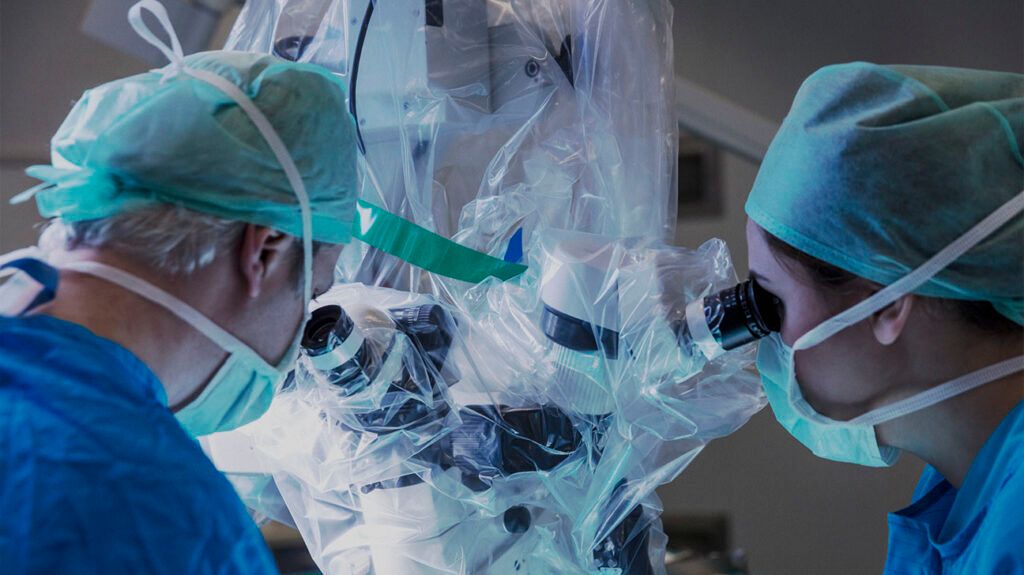A suboccipital craniotomy is a surgical approach that allows a surgeon to access a specific area within the base of the skull. A person may have this surgery if they have a tumor or another issue affecting this part of the brain or skull.
Generally, suboccipital craniotomy can treat various conditions in the brain, including tumors, Chiari malformation, and vascular lesions. Advances in modern technology have allowed for procedures such as this technique, which carries a reduced rate of complications and mortality.
This article discusses the reasons a surgeon may need to perform a suboccipital craniotomy and more about what someone can expect from the procedure.

A suboccipital craniotomy is a type of surgery that involves removing a small piece of bone at the base of the skull called the occipital bone. Surgeons do this to access a part of the skull called the posterior fossa, which contains structures such as the cerebellum, the brain stem, the fourth ventricle, and cranial nerves.
There are several types of suboccipital craniotomy,
- standard suboccipital craniotomy
- retrosigmoid craniotomy
- transcondylar craniotomy
- far lateral craniotomy
The type of procedure a person needs will depend on their condition, the aims of the surgery, and the surgeon’s treatment plan.
Learn more about craniotomies.
Surgeons may perform a suboccipital craniotomy for any of the following reasons:
- Tumor resection: Tumors in the posterior fossa can be benign or cancerous. Depending on the type and location, sometimes tumors can cause symptoms such as hearing loss, tinnitus, and balance problems.
- Vascular malformations: Vascular malformation in the brain refers to an atypical development of the brain’s blood vessels. For example, they may tangle or form atypically. When these malformations are present in the brain, they can cause symptoms such as headaches, brain hemorrhage — which involves brain bleeding, and seizures.
- Decompression: Certain conditions can cause pressure on the brain or nerves in the brain due to swelling or malformations. A surgeon can use a suboccipital craniotomy to alleviate this pressure and surgically correct the cause of the compression.
- Access: A surgeon may need to perform many procedures in the posterior fossa area of the skull. A suboccipital craniotomy can allow access to these areas for the surgeon to perform shunt placement or take biopsies.
In preparation for a suboccipital craniotomy, a person’s doctor will explain the procedure, including what they will be doing and what people should expect.
A person can expect the following before and following the surgery.
Before the procedure
Before any surgery, a person can expect to undergo certain tests and examinations. These can help the surgeons create a treatment plan and prepare for surgery.
Preassessment tests can involve:
- taking medical history
- physical exam
- blood and urine tests
- MRI
- CT scan
- PET scan
- angiography
- an electrocardiogram
- a
neurological exam
In the appointments leading up to the surgery, a person needs to speak with their healthcare team to discuss their medications and share any questions.
The person having surgery will usually not be able to eat or drink anything from a specific time before the procedure. They should follow their surgeon’s instructions on when this time is.
During the procedure
For the surgery, the individual will
The surgeon will make an incision somewhere at the base of the skull and remove a small section of bone to carry out the procedure. They will then replace the bone once at the end of the surgery. They may need to shave a section of hair.
After the procedure
In most cases, a surgeon will wake the individual up soon after surgery. However, in some cases, they allow the person to sleep for longer to help facilitate recovery.
An individual may expect to feel tired and sore after surgery. Their healthcare team will monitor how they are feeling and provide pain relief.
The healthcare team may carry out imaging tests postsurgery to monitor the outcome and, if necessary, organize physical, occupational, or speech and language therapy.
After a craniotomy, a person can expect to stay in the hospital for up to 10 days, but this can vary. The total recovery time is usually around 6–12 weeks. A person may have to attend follow-up appointments for weeks or months after surgery.
During this time, a person may not be able to:
- drive
- travel by air
- take part in contact sports
- engage in strenuous activity
A healthcare team will be able to tell the individual when they may be able to return to work and everyday activities.
A healthcare team will always work to ensure a person is as comfortable as possible after their procedure and to reduce side effects as much as possible. However, with any major surgery, side effects and complications can still occur.
Possible side effects and complications after a suboccipital craniotomy include:
- swelling
- scarring or denting at the surgical site
- infection
- muscle weakness
- seizures
- brain swelling
- damage to sinuses
- brain hemorrhage
- vasospasm or artery constriction
- leaking cerebrospinal fluid
- speech problems
- damage to facial nerves
- blood clots
- stroke
- memory issues
- paralysis
- coma
Major complications are not common in craniotomy procedures and occur after only
A suboccipital craniotomy is a surgical approach that a surgeon may use to access an area at the base of the skull called the posterior fossa. They may use this approach for many reasons, such as tumor resection or removing vascular malformations.
Like any major surgery, a suboccipital craniotomy requires recovery time and may result in some side effects or complications, but these are most often minor. A person can consult their doctor or a member of their healthcare team to understand more about the procedure and what to expect.
